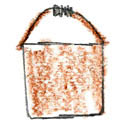Bringing the Garden into the Classroom
A school garden can be integrated into the classroom in many ways. Typically, gardens have been used to enhance science lessons. Lessons pertaining to plants are the easiest to teach with a garden, but you should not limit your garden to these types of lessons.
With enough creativity, the garden and garden activities can be applied to just about any lesson taught in the classroom. There are many supplements and resources available to help you incorporate the garden into your classroom, but again your own creativity is your best asset.
Science and math have been the subjects most frequently taught with the help of the garden. Obviously, a garden lends itself perfectly to teaching about plant parts and growth.
Other science lessons that can be used with the help of the garden may pertain to soil composition, composting, weather, insects (especially if you have a butterfly garden), and many, many more.
Allowing your students to help plan and design the garden can help them learn about measuring, calculating, budgeting, and planning ahead.
History and language arts lessons can also be enhanced with the garden. Students can learn about the history of food production both by early settlers and Native Americans. They can compare the types of food eaten around the world, throughout history, and in their homes.
Students can also read about Native American legends and other folklore related to gardening and crop production.
Poets and writers have been writing about gardens and plants for centuries, and students may find this type of literature more interesting if they have an actual garden to compare with the literature.
Additionally, artists around the world have painted gardens in every imaginable way—just imagine what works of art the garden may inspire your students to create.
And remember—while science is important and a garden lends itself perfectly to these types of lessons, try not to limit the garden to only science. Studies are finding that the more actively involved students are in their learning, the better they learn. A garden is the perfect place for hands-on active learning, and the more it is used, the more your students will learn from it.

